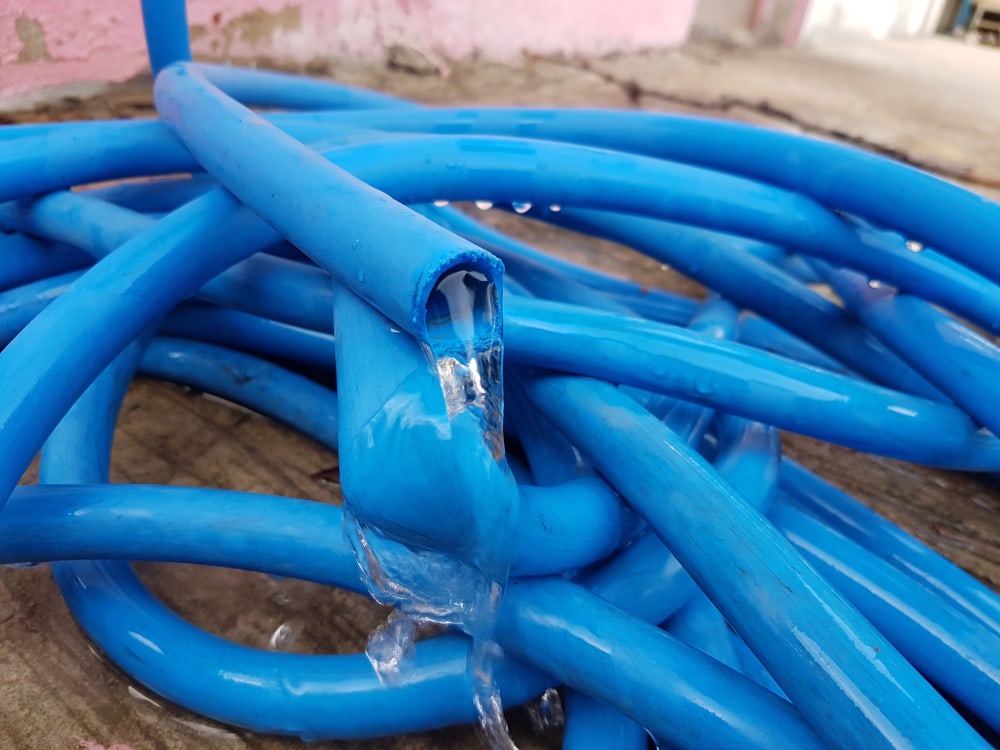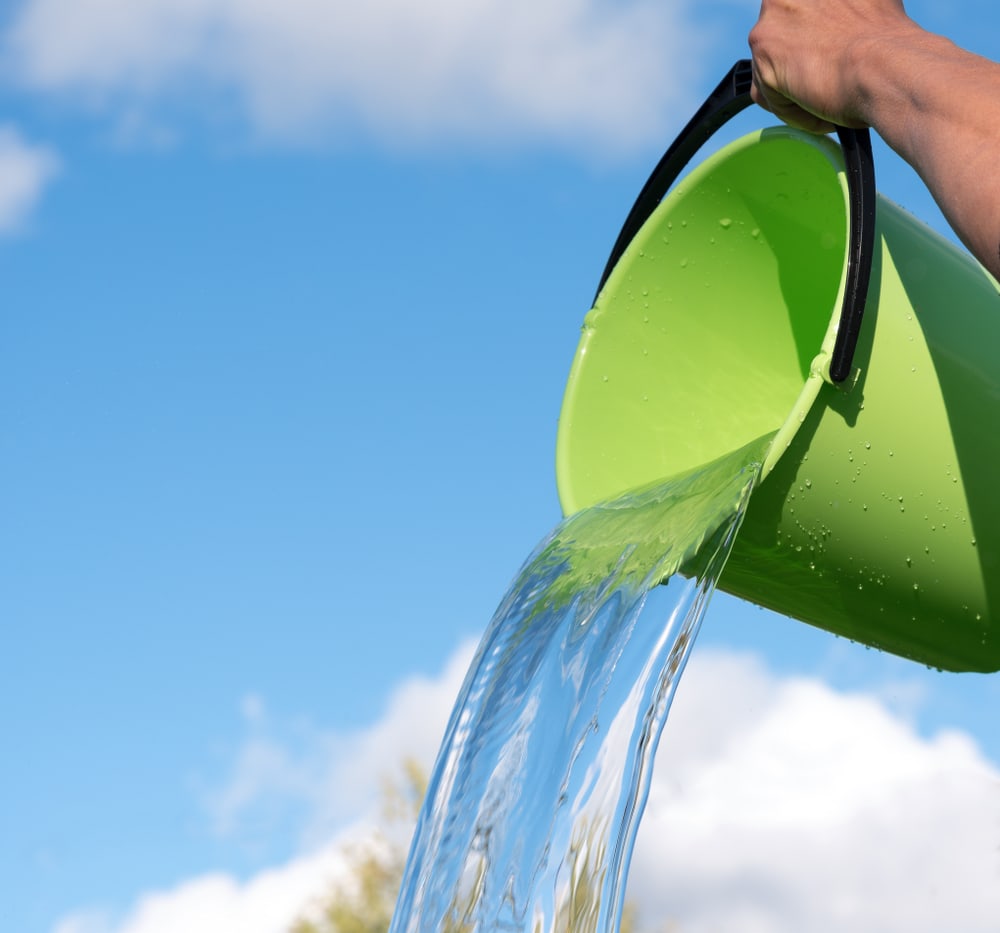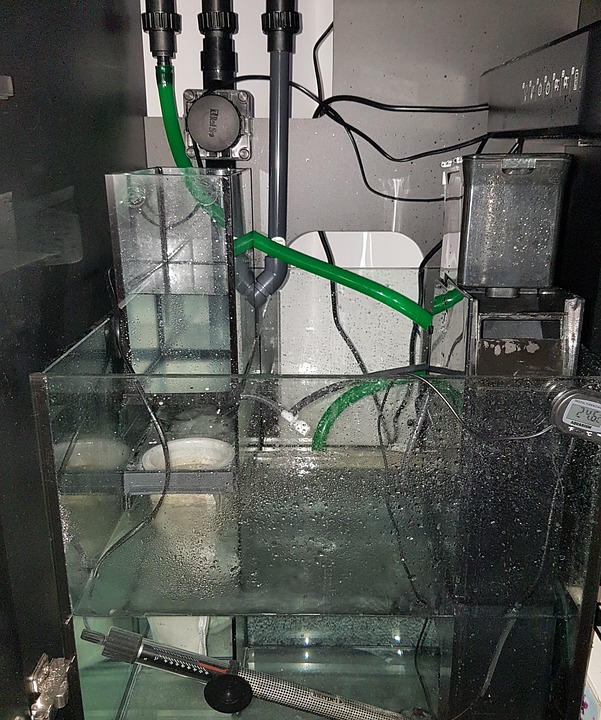Water changes are the most dreaded part of regular tank maintenance to most hobbyists. So much so, that many people start skipping water changes for weeks or months at a time. I don’t blame them, lugging buckets, checking salinity and parameters of new saltwater, stressing fish and other tank inhabitants, and the inevitably of spills make this process less than fun. More often than not, this leads to their tank becoming overgrown with algae and Cyanobacteria because they end up with excess nitrates and phosphates. Corals stop growing, maybe even die off. Fish can become stunted, and don’t exhibit their bright coloration like they used to do. All of this can be mitigated by redesigning your setup to make it more self sustaining and efficient.
 Why do We do Water Changes in the First Place?
Why do We do Water Changes in the First Place?
The most common reason we give hobbyists for the need to do water changes is to keep nutrients in check. Through nitrification, fish and corals produce nitrates and phosphates. These feed nuisance algae and bacteria and can cause damage to tank inhabitants if levels rise enough. For lower maintenance reef tanks that don’t require daily dosing of alkalinity, calcium, or magnesium, water changes are also able to sustain coral growth since new saltwater replenishes these elements and other micronutrients.
[Refugium]
How can a Remodeled Sump Serve to Replace Water Changes?
In short, a properly designed refugium is able to remove all phosphates and nitrates through macro algae growth and biological media blocks. Dosing elements, amino acids, and micronutrients with an automatic doser would eliminate the need for fresh saltwater as it will replenish these levels as the tank uses them.
Things Needed to Create this Setup
The biggest issue people have with setting up a water changeless tank is having an undersized sump. This needs to be at least roughly a third of your display tank in terms of volume. If you have a 125 gallon display, you will need 40 to 45 gallons underneath to be successful. The refugium chamber should be the largest section, as growing enough macro algae is crucial to this method. This section alone needs to be 10 to 20 percent of your display tank volume. That 125 gallon tank will need at least a 12 or 15 gallon area to grow algae, the bigger the better. You will also need a dosing system, auto top off system, a good light, protein skimmer, and the elements you will need to dose (calcium, alkalinity, magnesium, and basic trace elements for starters). Biological media blocks will also be extremely useful as large ones provide anaerobic bacteria layers that consume nitrates.
How to Set up This System
Typically, the refugium area should be in the first section of your sump where the water draining from your display tank is sent. Chaetomorpha is the recommended algae to grow, since it is unable to sexually reproduce. For best results, use a small circulation pump directed at the ball of chaeto so it is constantly spinning. This is the best way to encourage fast growth. Mount your light in your stand and have it come on when your main tank lights go off for the night, and turn off when your tank lights come on in the morning. This helps maintain a stable pH. Many people chose to put their media blocks on the bottom of this section, but they can also be placed underneath the protein skimmer. The skimmer goes into the second chamber. Live rock rubble can also be put in around the base of the skimmer for more biological filtration, but it isn’t necessary if you use the media blocks. Most systems have a place for carbon or other chemical filtration between the baffles of the second and third chambers. Use this area for carbon, filter floss, filter pads, or any other filter media you may choose to use. Finally, the return pump goes in the final chamber just like any other set up.
Your dosing pumps and auto top off systems can be placed anywhere in the sump that works for you, but I prefer to put them in the final chamber. This allows them to be distributed to the tank immediately through the return pump. Make sure to test your tank daily the week leading up to setting up your dosers so you know how much of each element your tank utilizes each day. Dialing these pumps in and getting it perfect can be tricky, but it makes your life easier and can be crucial for this system to work for you.
Long Term Maintenance Required for Success
Depending on growth, you will need to trim your macro algae ever few weeks to every month. This physically removes the nitrates, phosphates, and other contaminants used by the algae. If you don’t trim, these are still in your tank. They’re just locked up within the algae itself so it doesn’t show up on tests. Over time however, the plant can leech them back into the water column if left untrimmed. Excess growth can also shade other sections of the algae and cause die off, which will also lead to leeching. Additionally, if you have your algae spinning, not trimming the ball can lead it to getting stuck and being unable to move.
Many companies offer lab quality, in depth water testing. They test for the basic items we are familiar with and numerous metals, elements, contaminants, and micronutrients. It is a good idea to send a water sample to one of these labs every 3 to 6 months just to be sure you are dosing enough of the less abundant elements and that you don’t have any contaminants getting into your tank. These tests are a good idea for all hobbyists, but even more so if you are trying to maintain a healthy ecosystem that can be self sustaining without water changes.
This new method of reefing and fish keeping has been becoming increasingly popular in recent years as hobbyists try to recreate the ocean within their tanks. It allows us to enjoy our systems without the headache of water changes, while being just as successful. That being said, it isn’t for everyone. I have met people who have tried this method that did not see the coral growth they wanted or had nuisance algae problems that only water changes could fix. Every method of fish keeping has its flaws, but researching and getting your sump set up correctly can give you a much better chance of success. With how busy most of us are with our daily lives, I believe a lot of us can appreciate this method and shouldn’t be afraid to try it out. After all, our aquariums are meant to bring us peace and be a calming presence and a tank without water changes can deliver that without all of the work typically involved in maintaining a saltwater tank!
[Refugium]






Michael Floyd Reeder says
Excellent article, I used this to build and start my first refugium.
Bennett Sheppard says
I will definitely follow this when I set up my 120 gallon display and 40 gallon sump.
Gianna Bilotto says
The beginning of this article was very true about the stresses of changing the water in a fish tank! Always so much work!! Thanks so much for the article!!
SEAN PAGE says
Love my fuge, been running one for years no water changes ever now even an ATO for less maintenance!